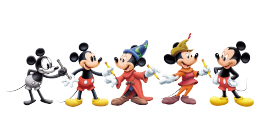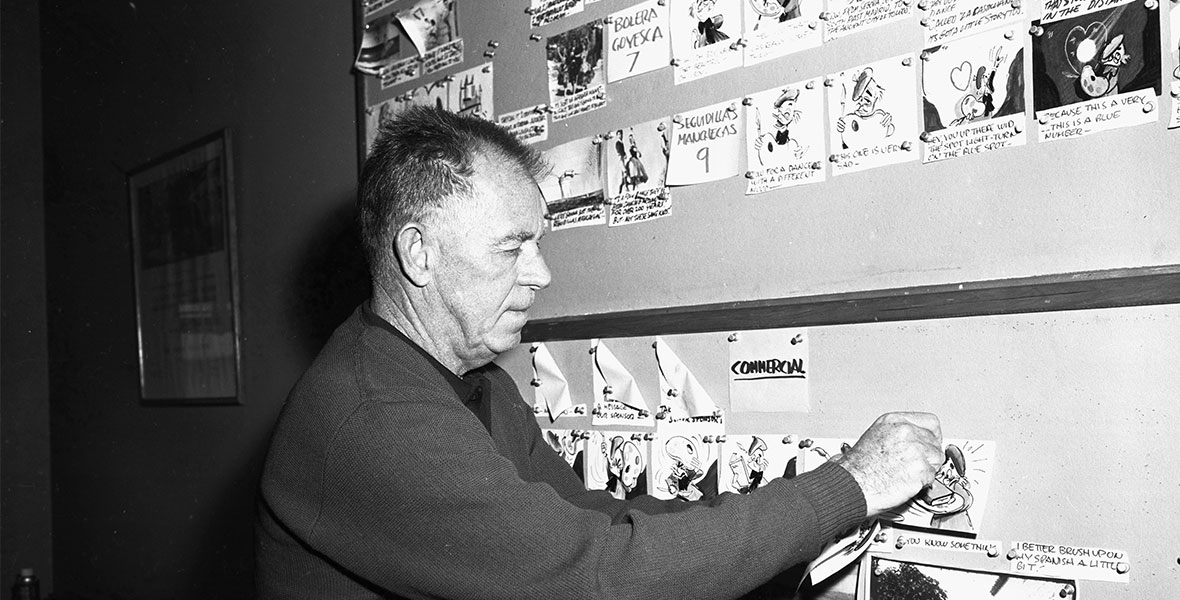A business major with no formal art education, Ham Luske was the first animator cast by Walt Disney on his daring new project Snow White and the Seven Dwarfs. In a memo dated from late 1935, Walt wrote, “From now on Ham Luske is definitely assigned to Snow White.”
As the film’s supervising animator, Ham was responsible for the most difficult character of all—Snow White. The audience had to believe in her for the picture to be a success; this led to the use of such groundbreaking techniques as live-action reference films. Ham adeptly directed a live-action model, actress Margie Bell, for filmed footage that artists referred to as they brought the character to life.
Animator and fellow Disney Legend Ollie Johnston recalled, “Ham’s careful planning and shooting of the live-action footage, always with the idea in mind of how it would be used in animation, resulted in a very convincing character.”
Born Hamilton S. Luske in Chicago on October 16, 1903, Ham earned his degree from the University of California at Berkeley. An innately gifted artist, Ham’s first professional job was as a cartoonist for the Oakland Post-Inquirer.
In 1931, he joined The Walt Disney Studios, animating animals for the early Mickey Mouse short The Barnyard Broadcast. Three years later, he significantly advanced the art of personality animation with his portrayal of Max Hare in the 1935 Academy Award®-winning Silly Symphony The Tortoise and the Hare and Jenny Wren in the Silly Symphony Who Killed Cock Robin? Film star Mae West, who served as inspiration for Wren, was so impressed with the caricature’s performance that she wrote a letter to Walt complimenting him on the animation.
Ham’s ability to develop an easy-to-follow step-by-step system for planning a scene made him a natural teacher of younger animators and, under his guidance, many new artists were developed.
After the success of Snow White, Ham’s career turned toward directing and, during World War II, he directed government training films such as Weather At War. He would later direct educational films, such as Donald in Mathmagic Land. He also served as supervising co-director on Pinocchio and sequence director on Fantasia, Cinderella, Alice in Wonderland, Peter Pan, Lady and the Tramp, One Hundred and One Dalmatians, and the cartoon sequences featured in Mary Poppins.
Ham later moved into television, serving as associate producer and director on such series as Disneyland, Walt Disney Presents, and Walt Disney’s Wonderful World of Color.
Ham Luske passed away on February 18, 1968, in Los Angeles, California.



